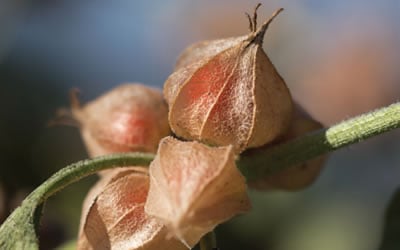Ashwagandha

In Ayurvedic medicine, ashwagandha, Withania somnifera, is known as a 'rasayana', meaning a rejuvenative. Rasayanas enhance both the quality and quantity of life, nourish the mind and enhance vigour, making them perfect for weak, debilitated or exhausted conditions. Due to its ability to support the function of both body and mind, ashwagandha is one of Ayurveda's most prized rejuvenative herbs. The Sanskrit word 'ashwagandha' is translated as 'the smell of a horse' which reflects its ability to bring you the essence of a horse; strength and stamina nourishing the male and female reproductive and nervous systems.
Ashwagandha's botanical name, Withania somnifera, gives us further clues as to its properties; 'somnifera' is translated as 'sleep-inducing', reflecting the relaxing and sedative actions that bring us energy through supporting deeper rest.
Not only does ashwagandha have impressive rejuvenative actions on our nervous system, it also supports endocrine function by directly regulating the thyroid, pancreas and adrenals. Ashwagandha is also rich in iron with the ability to improve white blood cell production and strengthen a weak immune system. It is these all-rounder qualities that make ashwagandha a popular choice for treating stress, auto-immune conditions, infertility and blood disorders such as anaemia. Withanolides, a family of key constituents found in ashwagandha, have demonstrated their ability to encourage regeneration of liver cells in addition to inhibiting tumour growth.
The Plant
Ashwagandha belongs to the Solanaceae (or nightshade) family. The most revealing family features are its small red berries, which are not unlike tiny cherry tomatoes; the likely source of its other common name, 'winter cherry'. Interestingly, ashwagandha's ability to help the body adapt to stress is reflected in the fact that the plant thrives in arid conditions and poor quality alkaline soils. This is an environment in which most plants would
suffer from severe stress.
A Little Bit Of Chemistry
Ashwagandha contains alkaloids, phytosterols, saponins and iron but perhaps its most interesting chemical constituents are steroidal lactones. These important medicinal constituents are a family referred to as withanolides and withaferins. Withanolides show adaptogenic, anti-inflammatory, anxiolytic, anti-depressant and anti-tumour activity in addition to hepato (liver)-protective qualities.

